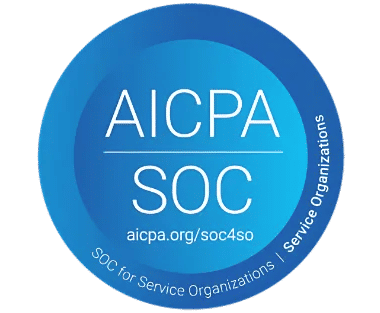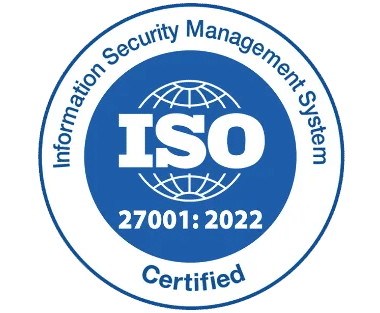LMS for Telecommunications: Driving Continuous Learning & Growth
Empower your telecom workforce with a dynamic learning system that adapts to industry changes, enhances skills, and fosters professional development at every level.
_Wn-RZ9F3z.webp)
In the rapidly evolving telecommunications industry, simply keeping pace is not enough. To stay competitive, companies must focus on continuous learning and adaptability. A strong Learning Management System (LMS) is key to achieving this, as it empowers telecom companies to provide employees with the necessary skills and knowledge to thrive.
Telecom companies face constant changes, whether it’s through new technologies, evolving customer demands, or regulatory updates. With an effective LMS, training can be streamlined, ensuring that all employees are always up-to-date and well-equipped to handle these challenges.
A study by McKinsey found that companies investing in continuous learning improve employee performance by 14% and increase their overall productivity. This makes LMS an essential tool for driving business success. By offering a centralized platform for training and development, companies ensure that employees can easily access learning materials, track progress, and gain certifications, all while fostering a culture of growth.
In short, an LMS is not just a tool it’s a driver of transformation, helping telecom organizations stay ahead in a constantly changing landscape.
What Is LMS for Telecommunications?
An LMS for telecommunications is a specialized platform designed to streamline the training and development of employees within the telecom industry. It provides telecom companies with an efficient way to deliver training, track progress, and ensure that employees are up to date with the latest technologies, regulations, and skills needed to perform their roles effectively.
With an LMS, companies can centralize their training programs, offering employees easy access to learning resources, certifications, and updates on industry standards. This system is tailored to meet the unique needs of the telecommunications industry, where rapid technological advancements and regulatory changes require constant skill development and adaptability.
In addition to offering course content, an LMS for telecommunications often includes features such as real-time feedback, performance tracking, and compliance management, ensuring that training is not only effective but also aligned with the company’s business objectives and industry requirements.
Understanding the Importance of LMS in Telecommunications
Telecommunications is a dynamic sector, constantly evolving with technological advancements and regulatory changes. To maintain a competitive edge, companies must invest in their most asset: their employees. An LMS provides a structured platform for training, ensuring that employees are well-versed in the latest technologies and compliance standards.
- Quick Adaptation to New Technologies
LMS platforms allows telecom companies to rapidly deploy training on emerging technologies, ensuring employees stay ahead of the curve with minimal downtime.
- Centralized Knowledge for Global Teams
An LMS provides a unified, accessible platform, ensuring consistency in training across diverse, geographically spread teams.
- Remote Hands-On Training
LMS platforms offer virtual labs and simulations, enabling remote employees to gain hands-on experience without needing to be physically present.
- Real-Time Updates for Compliance
Telecom regulations change frequently, and an LMS can instantly update training content, ensuring all employees remain compliant.
- Personalized Learning Paths
LMS platforms allow for tailored learning experiences, making training relevant to specific roles, skills, and employee development needs.
- Integration with Support Tools
An LMS can integrate with CRM and support systems, enabling customer service teams to access up-to-date training and troubleshooting resources.
- Predictive Training for Future Needs
By analysing data, an LMS can predict future skill gaps and proactively offer training to address those needs, keeping employees prepared.
- Empowering Employee Ownership
An LMS fosters a sense of ownership by allowing employees to choose their own learning paths and track progress, promoting self-driven growth.
- Advanced Analytics for Talent Management
Data from the LMS provides valuable insights into employee performance, helping managers identify top performers and areas that need support.
- Fostering a Learning Culture in Remote Teams
An LMS promotes continuous learning for remote and hybrid workers, ensuring all employees have equal access to development opportunities.
Key Benefits of Implementing an LMS in Telecom
- Scalability Across Global Teams
Telecom companies often operate across multiple regions. An LMS allows for standardized training delivery, ensuring consistency in knowledge across all locations. This centralized system ensures that no matter where employees are located, they have access to the same high-quality training resources and support.
- Real-Time Updates and Compliance Tracking
With frequent regulatory changes, an LMS enables swift updates to training materials, ensuring employees are always compliant with the latest standards. This helps companies stay agile and minimize compliance risks while maintaining up-to-date training content.
- Enhanced Employee Engagement
Interactive modules, gamification, and mobile access increase learner engagement, leading to better retention and application of knowledge. These features foster a dynamic learning environment where employees feel motivated to continue their development.
- Cost-Effective Training Solutions
Reducing the need for physical classrooms and printed materials, an LMS offers a more economical approach to training. It eliminates travel and venue costs while offering scalable solutions for teams of all sizes.
- Data-Driven Insights for Continuous Improvement
Analytics tools within the LMS provide valuable insights into learner progress, helping identify areas for improvement and tailoring future training sessions. These insights allow managers to adjust the training strategy to meet specific team or individual needs.
- Flexibility and Accessibility
LMS platforms provide employees with the flexibility to access training at their own pace, anywhere, and at any time. This 24/7 access ensures that learning can fit around employees’ schedules, especially important for those in remote or field-based roles.
Enhance your telecom workforce’s skills with an LMS that supports ongoing training, adapts to industry changes, and drives long-term professional development.

Core Features to Look for in a Telecom LMS
- Mobile Accessibility
Allows field technicians and remote employees to access training materials anytime, anywhere, ensuring flexibility in learning. This feature is especially useful for a dispersed workforce that requires on-the-go access to learning resources.
- Customizable Learning Paths
Tailors training to specific roles, meeting the unique needs of different positions within the company. Custom learning paths ensure that each employee gets the right training to excel in their specific job function, enhancing relevance and engagement.
- Integration Capabilities
Seamlessly integrates with telecom systems, providing a unified and streamlined learning experience. This feature allows data to flow smoothly between the LMS and other business systems, helping to align training with organizational goals.
- Compliance Management Tools
Tracks certifications and ensures employees meet industry regulations, reducing compliance risks. This tool provides reminders for certification renewals and helps ensure the entire workforce stays current with regulatory standards.
- Interactive Content Support
Supports videos, simulations, and quizzes, making learning engaging and improving knowledge retention. Interactive content fosters a hands-on learning experience, which is particularly effective in complex telecom tasks and scenarios.
- Real-Time Progress Tracking
Allows managers to monitor employee progress in real time, ensuring they stay on track with their training goals. This feature helps managers identify areas where employees may need additional support, ensuring timely interventions.
- Social Learning Features
Enables collaboration through discussion forums, peer reviews, and knowledge sharing. Social learning tools encourage employees to learn from each other’s experiences, fostering a community of shared knowledge and mutual support.
Implementing an LMS: A Step-by-Step Guide
- Assess Training Needs
Identify the specific skills and knowledge gaps within your organization. This step is critical for understanding where training is needed most and what areas need to be prioritized. Conduct surveys and performance reviews to pinpoint the exact learning needs.
- Select the Right LMS
Choose a platform that aligns with your company’s goals and integrates well with existing systems. Look for a flexible LMS that supports both current and future training needs. Ensure the platform offers scalability to grow with your organization’s demands.
- Develop Customized Content
Create training modules tailored to your organization’s needs and industry standards. Ensure the content is engaging, interactive, and relevant to your employees’ roles. Use a mix of multimedia and hands-on learning activities to cater to different learning styles.
- Launch and Promote
Encourage employee participation through incentives and clear communication. Make the LMS easy to access and ensure employees know how it benefits their personal growth. Communicate the advantages of the system, such as flexibility and skill development, to increase engagement.
- Monitor and Evaluate
Regularly assess the effectiveness of the training programs and make necessary adjustments. Use feedback from employees and analytics to improve training content and delivery. Track learner progress and identify patterns to enhance the learning experience.
- Provide Ongoing Support
Ensure employees have access to help and resources as they navigate the LMS. Support can include tutorials, FAQs, and a dedicated help desk for resolving issues. Offer live chat or support forums for real-time assistance during learning sessions.
- Continuous Improvement
Periodically review and update training content based on new developments, feedback, and evolving company needs. Keep training materials fresh and aligned with industry trends to maintain engagement and effectiveness. Involve employees in the feedback process to ensure the content meets their needs.
Best Practices of LMS for Telecommunications
Implementing an LMS in the telecommunications industry can streamline training, enhance employee performance, and ensure compliance. Here are some best practices for effectively using an LMS in telecom:
1. Align Training with Industry Needs
- Tailor Training Content to Telecom-Specific Skills: Focus on providing training that directly addresses the skills and knowledge needed in the telecommunications sector, such as technical know-how, customer service, and regulatory compliance.
- Stay Updated with Industry Trends: Regularly update your LMS content to keep up with the latest technologies and best practices in the telecom industry, including network management, cybersecurity, and new product offerings.
2. Mobile and Remote Learning
- Enable Access Anywhere, Anytime: Since telecom employees often work remotely or in the field, providing mobile access to training resources is essential. Ensure that your LMS is mobile-friendly, allowing employees to learn on-the-go.
- Offline Learning Options: For employees who may have limited connectivity, offer offline learning options or downloadable content that can be accessed without an internet connection.
3. Personalized Learning Paths
- Role-Specific Training: Customize learning paths based on employees’ roles. Field technicians might require different training modules compared to customer support staff or network engineers. Tailoring learning paths ensures relevance and maximizes the impact of the training.
- Adaptive Learning: Utilize LMS features that adapt training content based on an employee’s learning pace, performance, and role-specific needs. This helps employees to stay engaged and progress at their own rate.
4. Compliance and Certification Management
- Track Certifications: The telecommunications industry often requires employees to stay up to date with certifications, such as safety training or technical qualifications. Use your LMS to manage certification tracking and ensure compliance with industry standards.
- Automated Reminders: Set up automatic reminders for certification renewals, ensuring employees never miss an update or recertification deadline.
5. Use of Interactive Content
- Engage with Multimedia: Incorporate interactive videos, simulations, quizzes, and gamified elements to make learning more engaging. For example, telecom training may include simulation-based scenarios for technicians to troubleshoot network issues.
- Microlearning: Break down complex training modules into bite-sized lessons that employees can complete in short sessions. This helps improve retention and makes it easier to learn during busy work schedules.
6. Regular Feedback and Assessments
- Frequent Check-Ins: Provide opportunities for employees to check their understanding through quizzes or assessments after each training module. Immediate feedback helps reinforce learning and identifies areas that need further development.
- 360-Degree Feedback: Use peer reviews and manager feedback as part of the learning process. Incorporating diverse feedback helps employees understand their strengths and areas for improvement.
7. Gamification to Boost Engagement
- Implement Reward Systems: Use leaderboards, badges, and rewards to incentivize employees and foster friendly competition. Recognition can be a powerful motivator for employees to complete training programs and apply what they’ve learned.
- Track Achievements: Allow employees to track their progress and celebrate milestones. This promotes a sense of accomplishment and motivates continued learning.
8. Data-Driven Insights for Improvement
- Analytics for Continuous Improvement: Use data from your LMS to analyze learner progress, track course completion rates, and identify knowledge gaps. This data helps managers adjust training content and identify employees who need additional support.
- Personalized Feedback Based on Data: Provide personalized coaching or development plans based on learning progress, ensuring that employees receive targeted support where needed.
9. Collaboration and Social Learning
- Encourage Peer-to-Peer Learning: Use discussion forums, group projects, and social learning tools to foster collaboration among employees. Telecom workers can share insights, solve problems together, and learn from each other’s experiences.
- Knowledge Sharing: Enable employees to create and share training materials or best practices within the LMS, allowing for the continuous exchange of knowledge across teams.
10. Support for Continuous Development
- Ongoing Learning Opportunities: Offer a variety of learning opportunities beyond mandatory training. Provide resources like webinars, podcasts, and industry conferences to keep employees engaged in continuous development.
- Career Development Focus: Align LMS training opportunities with employees’ career paths. Provide resources that help employees grow within the company, preparing them for promotions or new roles.
Conclusion
In the telecommunications industry, continuous learning is not just an option; it’s a necessity. Implementing an LMS empowers companies to provide consistent, up-to-date training, leading to a more skilled and compliant workforce. By investing in the right LMS, telecom companies can ensure sustained growth and a competitive edge in the market.
Book a Demo
Ready to transform your telecom training programs? Book a demo today and explore how our LMS solutions can drive continuous learning and growth in your organization.
Empower Your Telecom Workforce
Transform your training process with an LMS that accelerates learning, enhances skill development, and ensures your team is always equipped for industry challenges.
Frequently Asked Questions
What is an LMS?
An LMS (Learning Management System) is a software platform used for creating, managing, and delivering training programs. It helps companies organize and track employee learning, provide educational content, and ensure compliance with industry standards.
How does an LMS benefit telecom companies?
An LMS streamlines training by centralizing content, tracking progress, and ensuring employees stay updated with the latest technologies and regulations. It improves employee performance by offering structured learning and real-time feedback, reducing costs and increasing efficiency in training.
Can an LMS be customized for specific roles?
Yes, most LMS platforms allow you to create customized learning paths for different roles, ensuring employees receive the relevant training for their job functions. Whether it’s training field technicians, customer service reps, or managers, an LMS tailors content to each role’s specific requirements.
Is mobile access important for telecom training?
Absolutely. Many telecom employees work remotely or in the field. Mobile access ensures they can easily access training materials anytime, anywhere, without being tied to a desk. This flexibility enhances learning engagement, allowing employees to stay up to date on the go.
How do I choose the right LMS for my company?
When selecting an LMS, consider features like scalability, integration capabilities with other systems, user-friendliness, and support services. A good LMS should also offer flexible content delivery, mobile access, and robust reporting tools to monitor progress and compliance.





_svxLrd-8yH.png)

_2VYSFUTN5m.png)

_JiluXJRGNl.svg)

_2djTKNocf.png)





_Rapo0hRMBy.png)


























